10 promising scientific startups of 2017 according to C & EN

Every year, C & EN selects the most interesting startups according to the authors and editors of the magazine. The choice was made, among other things, among companies in the field of artificial intelligence, analytics and visualization in relation to the biomedical and chemical fields.
The development of these companies will allow us to examine in greater detail the changes in the shape of proteins, identify molecules, find new drugs and materials through experiments, including those developed using machine learning algorithms.
ARRAKIS THERAPEUTICS
RNA targeting with low molecular weight compounds
Launched: 2015
Direction: Drug Development
Technology: Low molecular weight binding RNA compounds
Founder: Russell Petter
Finance: $ 38 million from investors, including Canaan Partners, Advent Life Sciences, Pfizer, and Celgene
RNA is quite a complex object for the development of molecular structures capable of selectively binding to it. Many companies have attempted to bind RNA specifically, for example, using RNA interference techniques, in which the RNA sequence is bound to the sequence complementary to it. Unfortunately, attempts to make this technology work in a predictable way in the human body have so far failed, with the exception of recent success in treating liver disease. Often drug molecules target proteins, but in Arrakis they create structures that target RNA. Those molecules that can bind mRNA - the genetic precursor of proteins - can prevent the formation of specific proteins that cause the disease.
If small molecules can accurately recognize a specific RNA, this will open up a completely new level for drug development. The problem is that of more than 20,000 human proteins, only about 15% are theoretically available for small molecules. Since messenger RNA (mRNA) is a chemical mediator between a cell's DNA script and protein actors, an mRNA-binding drug can stop the production of proteins, including those that cannot be achieved by conventional methods.
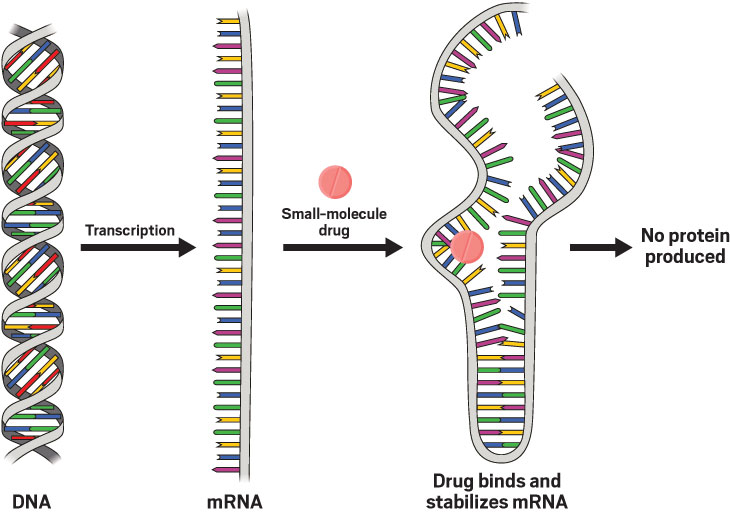
DNA is transcribed into mRNA - the drug selectively binds and stabilizes mRNA - associated mRNA cannot participate in the synthesis of proteins.
BORAGEN
Plant protection by boron
Launched: 2015
Direction: Pest control in agriculture
Technology: Adjustable Boron Molecules
Founders: Stephen J. Benkovic, Gerald Fink, C. Tony Liu, Paul Schimmel and Lucy Shapiro
Finance: $ 10 million from the Bill & Melinda Gates Foundation, Arch Venture Partners, Flagship Pioneering, Bayer and Syngenta Ventures
According to the UN, every year, 20-40% of the world's crops are destroyed by plant diseases and parasites. Trading in a globalized world allowed farmers to expand markets, but also allowed serious diseases such as banana-threatening Fusarium to spread.
Despite the fact that large agrofirms introduce new pesticides every year, it is impossible to develop a universal pesticide. To two of the best-selling fungicides that were commercialized in the early 60s, many organisms have already developed resistivity.
Liu and his colleagues from Boragen created a library of boron-containing compounds to kill plant pests that have one thing in common: boron-based structure.
Classic fungicides are based on the chemistry of carbon, nitrogen, sulfur, or metals. The use of boron compounds is a new approach, which implies the possibility of searching for previously unseen mechanisms of action. This feature gave Boragen a place in the AgTech Accelerator-based Research Triangle Park, NC. Earlier this year, the company withdrew from AgTech with 10 million from accelerator investors, including the Bill and Melinda Gates Foundation, Bayer and Syngenta.

Benzooxoborol fungicides can be mixed with traditional fungicides. Two different mechanisms of action are used to prevent the manifestation of resistance to fungicide. The effectiveness of the boron-containing molecule can be reconfigured using one of two spatial forms.
CITRINE INFORMATICS
Use of artificial intelligence in lab materials
Launched: 2013
Direction: R & D materials
Technology: Artificial intelligence
Founders: Bryce Meredig, Kyle Michel and Greg Mulholland
Finance: $ 7.6 million from investors, including Innovation Endeavors, Prelude Ventures and Data Collective
The company was organized on the basis of a research group at the University of California at Santa Barbara, which collected a database of thermoelectric materials.
In September, Citrine announced the success of researchers from UCSB and General Motors using their software to solve long-standing problems that prevent the use of aluminum alloys in three-dimensional printing.

Using the principles of AI and machine learning in cloud-based software, Citrine accelerates and promotes materials research by modeling based on its own and publicly available data.
ECOVIA RENEWABLES
New approach to bioprocessing design
Launched: 2014
Direction: Bioprocessing
Technology: Modified Microorganisms
Founders: Nina Lin and Jeremy Minty
Funding or well-known partners: Grants from a US state agency totaling more than $ 1 million, angel investments and a project funded by AkzoNobel
Traditional bioprocessing approaches usually involve several successive steps. In contrast, Ecovia offers a more efficient process, using different microorganisms simultaneously for processing in one stage. Ecovia calls this approach the creation of synthetic microbial ecosystems. According to the company, EcoSynth Ecovia system can reduce the cost of chemical products by almost two orders of magnitude.
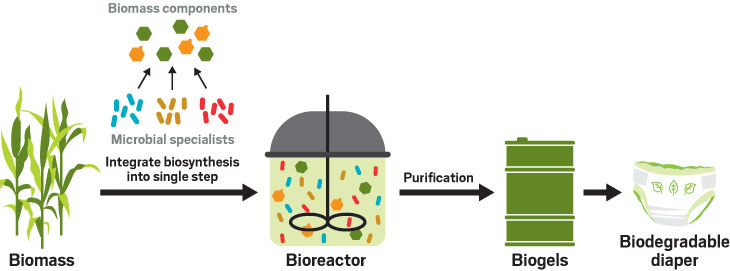
Use of bacterial families for bioprocessing in one stage.
EXSCIENTIA
Artificial intelligence to reduce the cost and speed up the development and search for drugs
Launched: 2014
Direction: Search and design of drugs
Technology: AI algorithms for finding the best drug candidates
Founder: Andrew Hopkins
Financing or well-known partners: Evotec, GSK, Sanofi, Sumitomo Dainippon Pharma and Sunovion
Exscientia uses data from many sources, including the partner pharmaceutical company, the scientific literature and the results of its own screening using surface plasmon resonance. The algorithm processes the data by suggesting promising connections. Then, chemists select 20 realistic compounds for production, which the pharmaceutical partner company Exscientia synthesizes and tests using various tests. Results are returned to Exscientia, where based on these results, another 20 compounds are re-selected. The whole cycle takes about two weeks (in other pharmaceutical companies the cycle may take two months).

The search for drugs in Exscientia begins with the processing of existing data, which are used to develop 20 compounds of the first circle for synthesis and testing. Further, the results of the first round are processed in the next round for subsequent design, synthesis and testing.
LIGHT POLYMERS
Lyotropic liquid crystals in lighting and displays
Launched: 2013
Direction: Displays and lighting
Technology: Lyotropic liquid crystals for polarizers and nanosuspensions
Founder: Marc McConnaughey
Financing or well-known partners: $ 29.3 million in venture financing, including from Tokyo Electron, JSR and Tsingda International Venture Capital
The technology used by Light Polymers was first developed in the USSR, when in the 1970s, attempts were made to create their own production of displays. In the late 1990s, many scientists working on liquid crystals formed new companies in this field of research. Evgeny Morozov and Valery Kuzmin were part of the original team working on this technology in Russia. After their first development in the laboratory of a research center in Moscow, they moved to California, and then joined Light Polymers, which was founded in 2013.
Their materials are ideal for suspending particles, such as LED phosphors. Suspension is used to make a thin film that helps transform blue light into white. In conventional LEDs, the phosphors are suspended in silicone oil. Lyotropic liquid crystals can organize phosphors more compactly and accurately than silicone. As a result, 25% more light output, less optical and heat losses. More importantly, you can change the film to emit a certain spectrum.
Another goal for Light Polymers is polarizers for displays. Currently, polarizing films on LCD displays are made of dyed polyvinyl alcohol, which is dyed and stretched in an organic solvent. Light Polymers want to replace this expensive process with a cheap water-based process, which could seriously change the $ 10 billion industry.
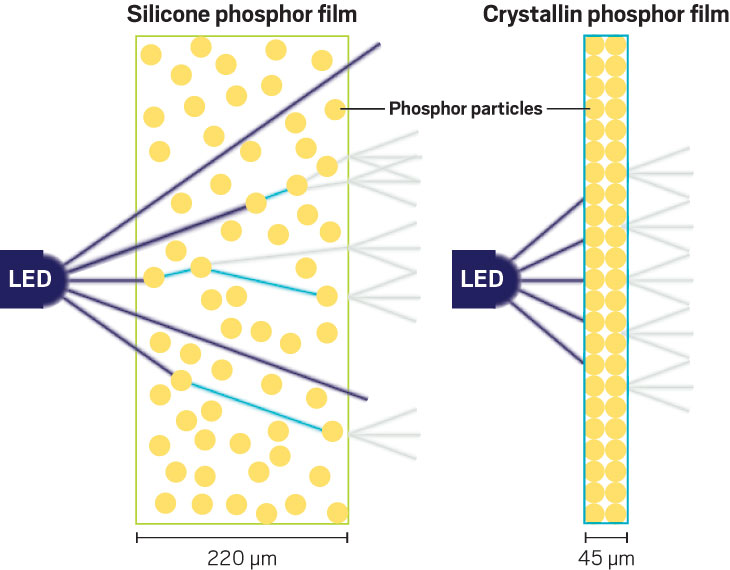
Light Polymers claim that their lyotropic liquid crystal phosphor films convert blue light to white, more efficiently than silicone phosphor films. In addition, they are thinner and use less phosphor.
P2 SCIENCE
Safe ozonolysis for industry
Launched: 2011
Direction: Specialized chemical production
Technology: Flow Ozonolysis
Founders: Paul Anastas and Patrick Foley
Financing or well-known partners: $ 9.6 million in the form of Series B financing from firms that include BASF
In industry, they try to avoid the use of ozonolysis because of the high reactivity of ozone and the difficulty of scaling the process.
However, the reaction of ozone with a double bond is a simple and effective way of obtaining important diacids, aldehydes and other oxidation products.
The traditional ozonolysis process involves bubbling an ozone mixture with air through a large reactor for eight hours. The reaction is very exothermic and can lead to unstable by-products.
In a continuous process from P2, the volume of reagents is only one thousandth of the volume of a traditional reactor and the reaction time is measured in minutes, not hours.
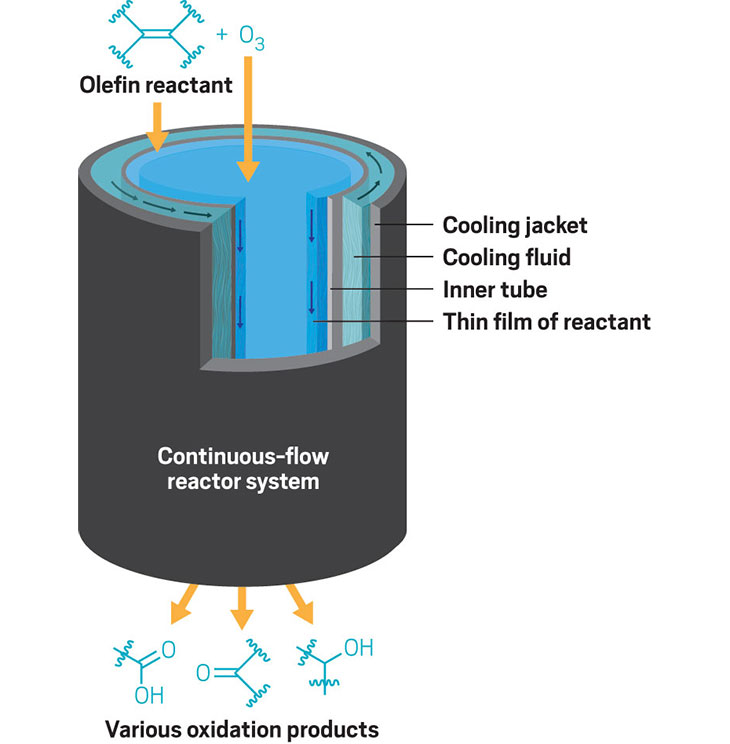
To make ozonolysis safe for chemical production, in a flow reactor from P2, the reactants are mixed with ozone in a thin layer when passing through a cooled reactor tube. This process promises to be safer, since a very small fraction of the reactants are mixed during the flow process.
RELAY THERAPEUTICS
The study of the movement of proteins to search for drug targets
Launched: 2016
Direction:
Technology:
Founders: Matthew Jacobson, Dorothee Kern, Mark Murcko and DE Shaw Research
Funding or well-known partners: $ 29.3 million from Third Rock Ventures
If we could see the actual behavior of proteins, as it actually happens, then we could find a target for previously inaccessible diseases. Among the most well-known examples of unapproachable targets is the KRas oncogene, which is known to mutate in a large number of oncological diseases.
Relay Therapeutics uses the latest technology to record the movement of proteins, which they hope will enable them to develop a research platform for the integrated treatment of complex cancer diseases.
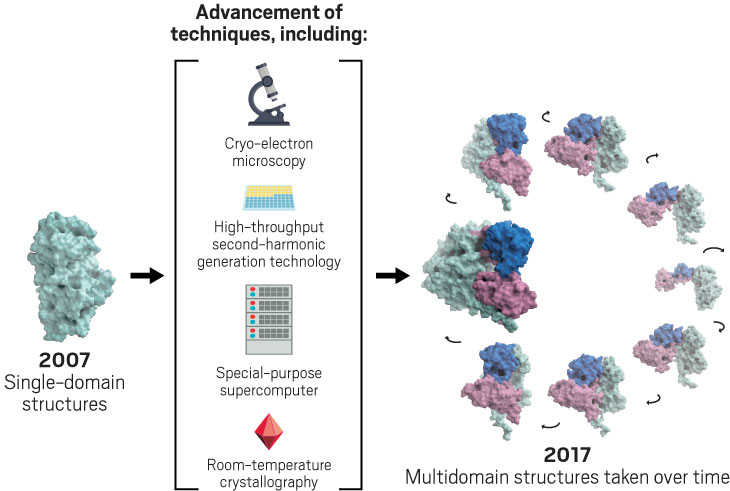
Previously unavailable technologies allowed Relay to record the movement of proteins, opening previously inaccessible points for docking by low molecular weight molecules.
SOLID POWER
Development of solid electrolytes for safer and more capacious batteries
Launched: 2012
Direction: Batteries
Technology: Solid Sulphide Based Electrolytes
Founders: Doug Campbell, Sehee Lee and Conrad Stoldt
Financing or known partners: $ 29.3 million
Modern lithium-ion batteries typically work with a lithium-ion cathode, a graphite anode, and a liquid electrolyte. The problem is that liquid electrolytes can ignite when heated. A safer solution — one that can also provide greater energy density — is a transition to a solid electrolyte.
Historically, the problem with sulphide electrolytes was the fragility of the material. Solid Power claims that low-temperature treatment of their electrolyte allows the use of polymeric binders that reduce brittleness. Solid Power also reports that lithium sulfide solid electrolytes can be produced at about the same price as liquid electrolytes. In testing, the electrolyte from Solid Power works reliably at a temperature of about 150 ° C — conditions in which liquid electrolytes can catch fire.
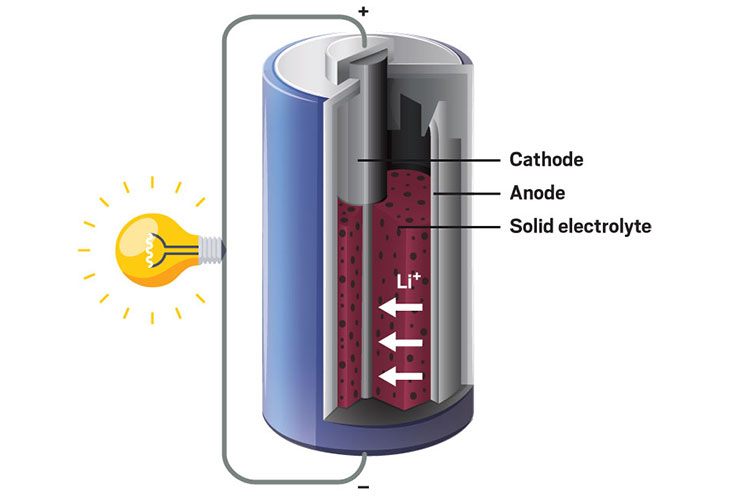
Solid Power uses solid sulfur electrolytes, which are safer at higher temperatures than highly flammable liquid electrolytes. Unlike batteries with liquid electrolytes using carbon or graphite anodes, solid electrolytes can also be used with a lithium anode, which significantly increases the energy density. The combination of a solid electrolyte with a lithium anode can provide the power density of Solid Power batteries up to 400-500 W / kg. This is more than twice the density of conventional liquid electrolyte cells that use ordinary graphite anodes.
TWO PORE GUYS
Portable nanopore based sensor with precision laboratory equipment
Launched: 2011
Direction: Diagnostics
Technology: Detection of molecules using nanopores
Founders: William Dunbar, Dan Heller and Trevor Morin
Funding or well-known partners: $ 31.5 million from Khosla Ventures and others
Nanopore technology as a research tool for about 20 years. Companies such as Oxford Nanopore Technologies and Illumina use nanopores for DNA sequencing. In contrast, Two Pore Guys technology is not designed for DNA sequencing (at least for now). Instead, it aims to receive electronic signals from molecules, such as pathogens or environmental pollutants.
The Two Pore Guys detection system is based on a test strip with an etched microchannel leading to a silicon nitride chip with a hole of 25 - 125 nm. The slide-plus-chip combination costs about 50 cents in low volume manufacturing. Analysis occurs when the user places a test strip in the device. A sample placed on a strip containing a reagent passes through channels to the crystal, where an electric current from the reader pulls the molecules through the nanopore. Finally, the detector transmits raw data for interpretation on a smartphone or tablet.
With the help of attracted funds, the company hopes to transfer the portable touch device and disposable test strips into the hands of developers next year. Developers will use the Two Pore Guys equipment to create quick and cheap tests for viruses such as HIV and Zika, food pathogens and various environmental pollutants. Monsanto agreed to evaluate their sensory system for analyzing biomolecules in agricultural crops, pests and pathogens.

Blood, saliva or another analyte is distributed on the slide, which is then placed in the detector. Microfluidic channels deliver samples to a silicon nitride nanopore chip. The charge from the detector transfers the molecule through the chip, records the signal from the molecules and sends it to the computing device for interpretation.
mistakes
The translation is not literal. The source text is too much water and uninteresting information to me . Criticism is welcome.
I am not a professional translator, so I beg you not to ignore errors and send them in a message.
I am not a professional translator, so I beg you not to ignore errors and send them in a message.
Update:
Corrected errors, thanks old_bear and ThunderCat
Added links.
All Articles